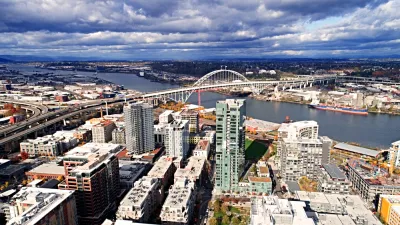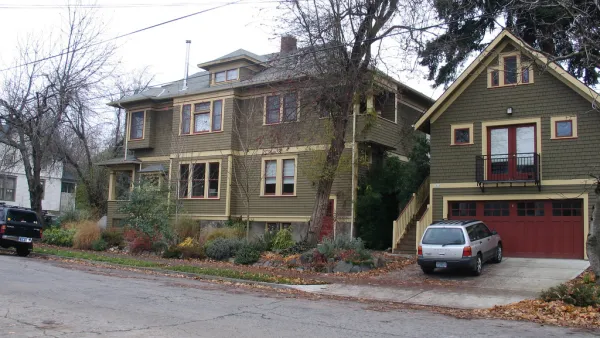A deep dive into what a Portland rent check pays for sheds light on strategies to help lower rising rents.

Michael Andersen recently crunched some numbers to answer two questions. First, if we take a hypothetical rent check from a Portland apartment and follow the money, what is the breakdown? And second, what does that tell us about ways to bring down rental costs in a city where more and more people are struggling to find affordable housing?
For the first part of his exercise, Andersen identified 11 factors that influence the cost of rent – everything from marketing and parking subsidies to property taxes and property management costs. He found that by far the largest chunk of a rent check went to housing materials and construction costs:
I assumed $194 per square foot of living space for work done in 2016 and 2017. It came to about 34 percent of project costs, the biggest single share of today’s rent check – and also the driving force behind most of the other factors, from architects’ fees to bank loans. For every $1 that hard costs rise or fall, total project costs rise or fall $1.31.
He then used this insight to take a closer look at nine ways rental prices could be brought down, some of which he acknowledges are less realistic than others. For example, Andersen suggests reducing public services (lowering the average rent by $85 a month) and making small apartments legal again ($158 a month).
In the end, he points to $832 of potential savings. All this, says Andersen, assumes that developers will pass on these savings to renters, which in the short-term they may not be inclined to do. However, the effect over time is also important: lower costs encourage overbuilding, which then drives down the price of housing.
Andersen says that lower-income residents are not going to be able to afford even the cheaper rent he is proposing, and more affordable units in older buildings are where they will end up. But, rents in newer buildings directly affect rents in older ones and so, argues Andersen, dealing with the cost of new buildings creates an important ripple effect throughout the housing market.
FULL STORY: What Makes Portland's New Apartments So Expensive?

National Parks Layoffs Will Cause Communities to Lose Billions
Thousands of essential park workers were laid off this week, just before the busy spring break season.

Retro-silient?: America’s First “Eco-burb,” The Woodlands Turns 50
A master-planned community north of Houston offers lessons on green infrastructure and resilient design, but falls short of its founder’s lofty affordability and walkability goals.

Delivering for America Plan Will Downgrade Mail Service in at Least 49.5 Percent of Zip Codes
Republican and Democrat lawmakers criticize the plan for its disproportionate negative impact on rural communities.

Test News Post 1
This is a summary

Test News Headline 46
Test for the image on the front page.

Balancing Bombs and Butterflies: How the National Guard Protects a Rare Species
The National Guard at Fort Indiantown Gap uses GIS technology and land management strategies to balance military training with conservation efforts, ensuring the survival of the rare eastern regal fritillary butterfly.
Urban Design for Planners 1: Software Tools
This six-course series explores essential urban design concepts using open source software and equips planners with the tools they need to participate fully in the urban design process.
Planning for Universal Design
Learn the tools for implementing Universal Design in planning regulations.
EMC Planning Group, Inc.
Planetizen
Planetizen
Mpact (formerly Rail~Volution)
Great Falls Development Authority, Inc.
HUDs Office of Policy Development and Research
NYU Wagner Graduate School of Public Service





























